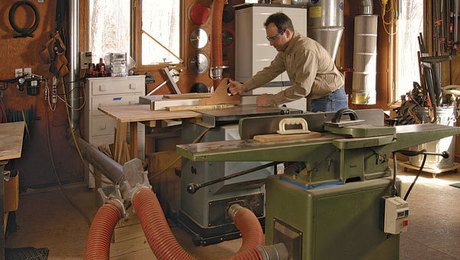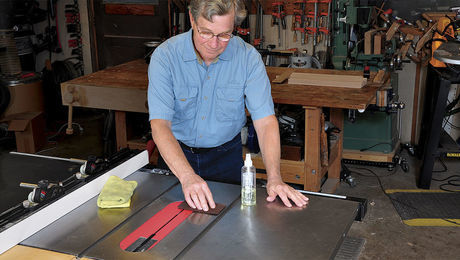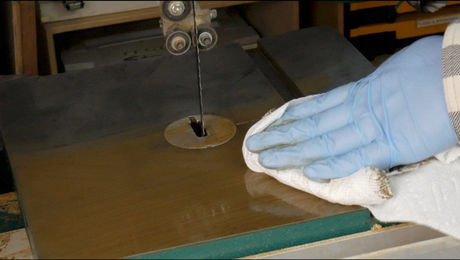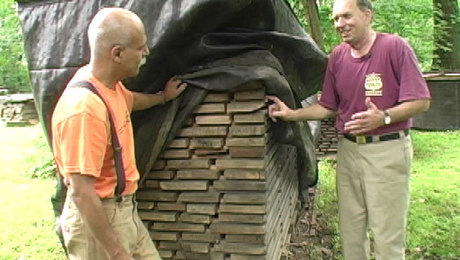This episode is sponsored by Mortise and Tenon Magazine
Question 1:
From Nick:
I’m in the market for adding my first dust collector. I’m hoping to get as much use of this as possible and either duct it to multiple machines (table saw, bandsaw, jointer, planer, sander etc.) or move it around the shop – either option works for me and isn’t a huge factor, although I’m sure I’d use it more religiously if I didn’t have to move it from machine to machine. The factors that are weighing most heavily in my mind are CFM and 1- vs 2-stage. For similar cost is it generally better to sacrifice some CFM for the benefit of a cyclone or should greater CFM always trump out? Is this even the right questions? Are there other specs I need to be weighing more heavily (HP, static pressure, etc.)? I’ve stipulated to myself that I’d get a 1 micron filter – is this really necessary for the occasional hobbyist woodworker? Should I consider a larger (say, 5-30 micron) filter which would allow me to get more suction out of a similar system?
 |
Dust Collection DemystifiedChoosing and configuring a system to fit your needs, with guidelines on capacities and suggestions for ductwork layout |
Question 2:
From Christopher:
This question is tailor made for Rolly Johnson. You really should have him on more! In my shop I have all the usual major power tools (table saw, jointer, planer, drill press) but I sorely miss not having a bandsaw. I have managed to get by with a jigsaw for some tasks but a jigsaw can’t resaw lumber into shop made veneer which, among other bandsaw tasks, is something I really would like to be able to do.
I think I would love to have a 20” bandsaw, but there is no way I could get such a big ticket item like that through the spousal budget committee. I have watched Matthias Wandel of Woodgears.ca make his various bandsaws on YouTube, as well as the one made on the Paoson Woodworking channel (www.paoson.com/en). The videos make it seem quite doable to make your own bandsaw for a fraction of the cost of a store bought one, but I wonder if the result is comparable. What parts of a bandsaw, if any, are just not suited to user fabrication? Are there any safety issues? What do I need to know about choosing the right motor? I have 220 volt power available.
Love the podcast. Have been listening since the Tom McKenna days and a subscriber of the magazine since the 90s.
Question 3:
From Aaron:
Most modern woodworking chisels and plane irons are made from O1, A2 or similar steels like PMV-11
However, pretty much any other tool (both for woodworking and metalworking) is made from high speed steel (HSS) – drill bits, taps and dies, wood lathe tools, machining tools, even knives for planers and jointers.
Why are chisels and plane blades different? Are woodworkers just trying to be different from everyone else, or is there a real reason for it? It looks like HSS can be sharpened just fine and holds an edge even when used to work metal.
Thank you and keep up the good work!
Question 4:
From Chris:
Hi Shoptalk Live, can you discuss the effect that speed has on cut quality? I’m intrigued by this… by the fact that my hand planes need to be razor sharp, but my jointer and planer aren’t nearly as a sharp yet their quality of cut is crudely comparable.
Questions 5:
From Gabriel:
I recently acquired a 1/2hp powerfeeder that I am thinking about using with my tablesaw and jointer. I’ve never used a powerfeeder but it seems like it would be helpful to face joint and possibly straight line rip rough lumber. I almost never see any articles or information about power feeders (for small shops). Could you guys discuss their uses and limitations a little?
Question 6:
From Craig:
I am looking to tackle some furniture projects for my adult children can put into their home and enjoy. Something that they could use and pass on. I have a deep collection of books from the years of measured drawings that are very detailed isometric detailed sketches, works of art in themselves.
Several in particular are from Franklin Gotshall . Many others were later years from Taunton Press. Those have detailed plans available but all the old classics do not.
My question: Should I first 3-D model these designs from these very detailed but super crowded isometric sketches that convey to critical features but hard to find at times? Also I can then mentally work out the workflow and create cut list and individual detailed components as well as full size sections where required to print and layout? I am a recently retired engineer and am very comfortable modeling and have, since retiring, started using and learning Sketch-Up for my own projects that I have sketched out.
Question 7:
From David:
My dear father (still with us) was a professional electrical engineer and an amateur woodworker. When he took early retirement in the early 90’s he has since invested heavily in his shop. Buying some serious pro quality machine tools, vintage hand tools, and wood. He has recognized the limitations of his age and had asked my brother and I to adopt, donate, or sell what he has.
My brother and I are cut from the same cloth. We love tools and learned how to share once we became adults. We want to preserve the collection in the family but many are beyond our means to store, power, or restore. As enviable and bittersweet this task is, my biggest concern is many of the pro machine tools have fallen victim to condensation rust on the beds over the last 10 years.
How would you approach tool bed restoration? Would your answer differ if the particular tools were to be kept, sold, of donated? We have access to a full machine shop but limited time between us to do restoration.
 |
3 Methods For Removing RustRollie Johnson demonstrates how to remove rust from your tools and keep it at bay |
 |
Cleaning Up A Rusty ToolRusty tools are a problem for every woodworker at some point, in this video we’ll show you how to make that problem go away |
Question 8:
From Dave:
Im wondering if you have any thoughts or experience using a gardening greenhouse as a solar lumber kiln. Assuming that I stack and sticker the lumber correctly, as well as allow for proper venting and fans for circulation, why would this not work? It seems to be a no brainer, but I feel like I may be missing something.
I can have either a greenhouse or a solar kiln, not both. Getting double duty out of the buildings that may sit vacant for extended periods otherwise would be a huge win.
 |
How To Dry LumberA seasoned sawyer reveals his secrets for drying lumber in a kiln or in the open air |
Every two weeks, a team of Fine Woodworking staffers answers questions from readers on Shop Talk Live, Fine Woodworking‘s biweekly podcast. Send your woodworking questions to [email protected] for consideration in the regular broadcast! Our continued existence relies upon listener support. So if you enjoy the show, be sure to leave us a five-star rating and maybe even a nice comment on our iTunes page.







